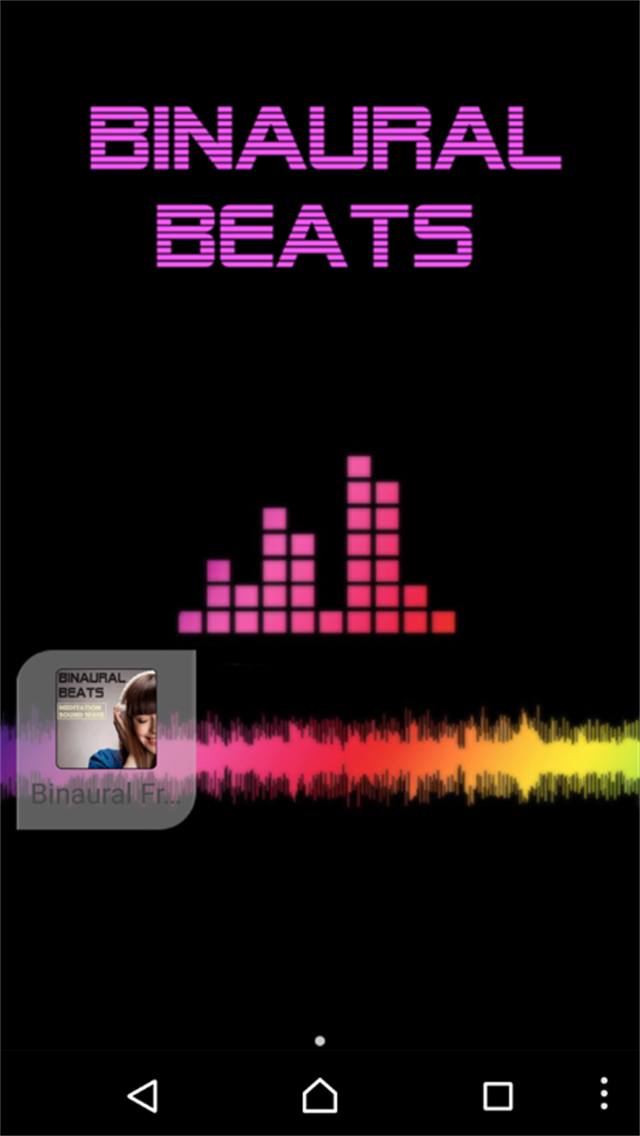
In order to hear binaural beats, both ears need to hear different sound frequencies at the same time.īefore deciding that binaural beats are of no benefit and something concocted by people who know nothing about scientific studies, you may want to take a look at some of the research conducted on the phenomenon.

If you only listen through one ear, your brain will only pick up on the sound frequency played in that ear. In other words, your brain has acknowledged hearing binaural beats that in reality are not there, thus the auditory illusion. What your brain captures is a third frequency that is the difference between the two, i.e. At the same time, the right earphone is receiving the sound frequency of a beat that is at 150 Hz. It hears one single beat that is somewhere between that of the two frequencies that are actually playing.įor example, let’s say that the left earphone is receiving the sound frequency of a beat that is 150 Hz. What your brain perceives, however, is not two individual sound frequencies. In fact, the word ‘binaural’ refers to ‘bi’ – two, and ‘aural’ – ear. How is this Auditory Illusion Created?īinaural beats are perceived in your brain when you wear earphones with two slightly different sound frequencies being played in each ear. In other words, binaural beats may be likened to auditory illusions. Binaural beats could best be described as an illusion that you hear. For example, someone walking through the desert thirsting for water may have their eyes play tricks on them, with them seeing an oasis in the far-off distance while there is, in fact, nothing there except more sand. Most people are familiar with an optical illusion.

Binaural beats may be described as a more modern approach to this time-tested methodology. Here, to a large extent, the repetitive sounds are used to manipulate certain brainwaves in order for them to transcend consciousness and help with spiritual growth, healing, and to promote concentration. Indeed, the drumming and chanting of Hindu healers, Yogis, shamans of the Americas, and even Tibetan monks are good examples of this.
BINAURAL FREQUENCIES TRIAL
Studies using high-quality designs have also consistently shown effects: using a double-blinded randomised control cross-over trial (the gold standard of clinical study), binaural beats reduced pain intensity, stress and use of analgesic drugs in chronic pain patients, compared with a placebo stimulation.Many ancient cultures have used music or, to be more specific, repetitive drumming as part of their various traditions in order to promote overall well-being and prosperity. A dose-response effect was found, meaning greater exposure to the sounds increased their effectiveness as a therapy. However, there have been conflicting findings around its effects on concentration.įor example, a meta-analysis that included 22 studies on the effect of binaural beats on memory, attention, anxiety and pain relief found across all studies a statistically significant and consistent effect. Research investigating binaural beats has found positive effects for pain alleviation, anxiety reduction, and memory. This third frequency is thought to produce a range of effects, including relaxation and attentiveness.Īcademic research has focused on two main uses for binaural beats:Ģ) as a substitute for or complement to psychoactive drug use (drugs that affect the nervous system and alter perception, mood, cognition or behaviour).

These two tones are then processed within our brains to sound like a third frequency. The perceptual auditory illusion created by binaural beats occurs when two pure tones of slightly different frequencies are presented to each ear. The perceptual phenomenon of binaural beats was discovered by Heinrich Wilhelm Dove in 1841 and first described in scientific literature in 1973. Listening to binaural beats has been claimed to help with sleep, stress, anxiety and cognition, and there’s much discussion online about whether or not they can cause a “high” similar to drugs.īut what actually are they? And what’s the evidence for beneficial or mood-altering effects? What are binaural beats? You might have seen online or heard about “binaural beats”, which have been described as “ digital drugs”. Moving exoskeletons from sci-fi into medical rehabilitation and therapy.Gut-brain link could change autism treatment.


 0 kommentar(er)
0 kommentar(er)
